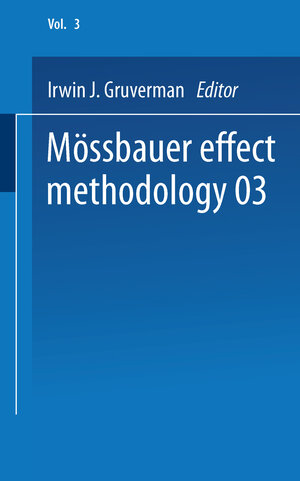
×
![Buchcover ISBN 9781475715477]()
Mössbauer Effect Methodology
Volume 3 Proceedings of the Third Symposium on Mössbauer Effect Methodology New York City, January 29, 1967
von Irwin J. GruvermanThe continued growth of Mössbauer effect methodology, and its virtuosity in encompassing new elements and new applications, are amply illustrated by the contents of this volume. The degree of maturity of Mössbauer spectroscopy is attested to by the increasing reliance of chemists upon Mössbauer investigation as a primary tool to be conjirmed by more „conventional“ measurements. An exciting development has been the use of neutron and Cou lomb excitation techniques to produce Mössbauer Ievels. This promises to Iead Mössbauer spectroscopy toward the very desirable „universal spectroscopy“ category. The prospect of extending the technique to many elements which do not possess useful precursor radionuclides is exciting indeed. While attention is being focused primarily on spectroscopy and applications, methodology is not being neglected. Another generation of drive designs is being reported, and commercial spectrometers are becoming more reliable, more competitive, and offer a reasonable selection of features at a wide range in prices. Several of the equipment companies who participated in the Third Mössbauer Methodology Symposium demonstrated approaches to Mössbauer spectrometer design (e. g., Austin Science Associates and Linear Alpha Corpora tion-Elron). A unique, new, very high countrate acceptance system demonstrated by Austin Science Associates was developed entirely in response to the need of Mössbauer spectroscopists for data acquisition rates beyond existing proportional counting capabilities. The range of proportional detectors available and a simple, inexpen sive demonstration spectrometer were exhibited by Reuter-Stokes Electronic Components, Inc.


